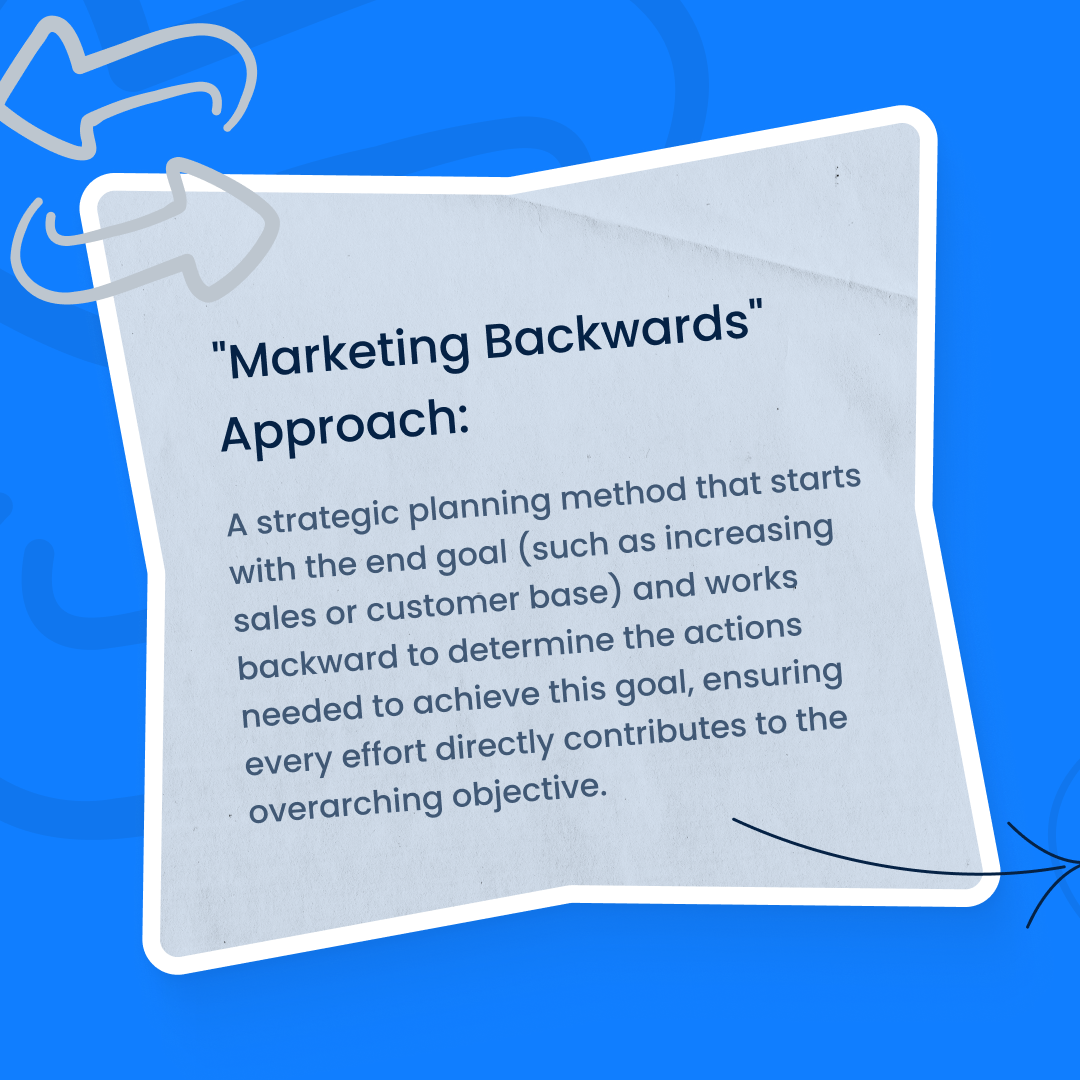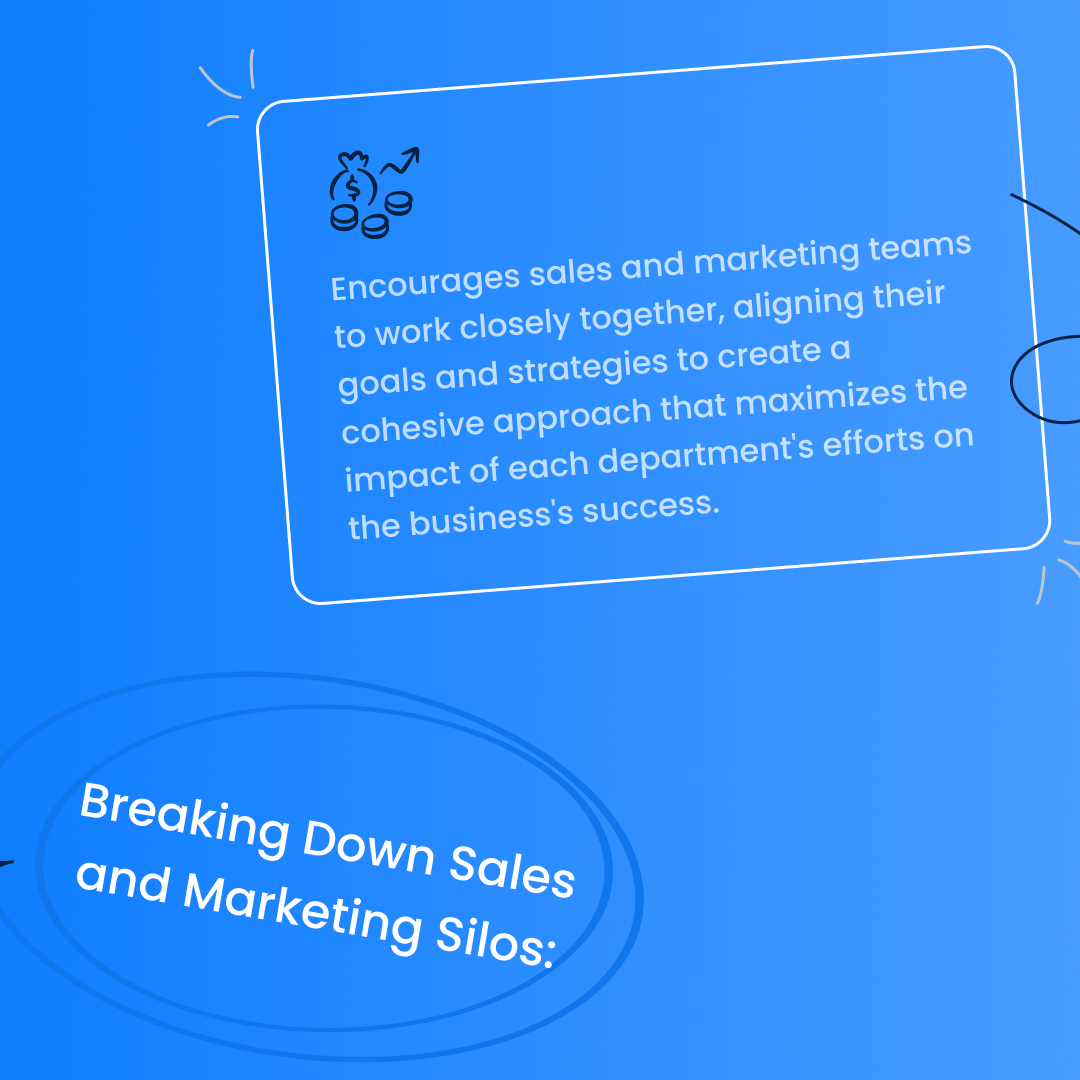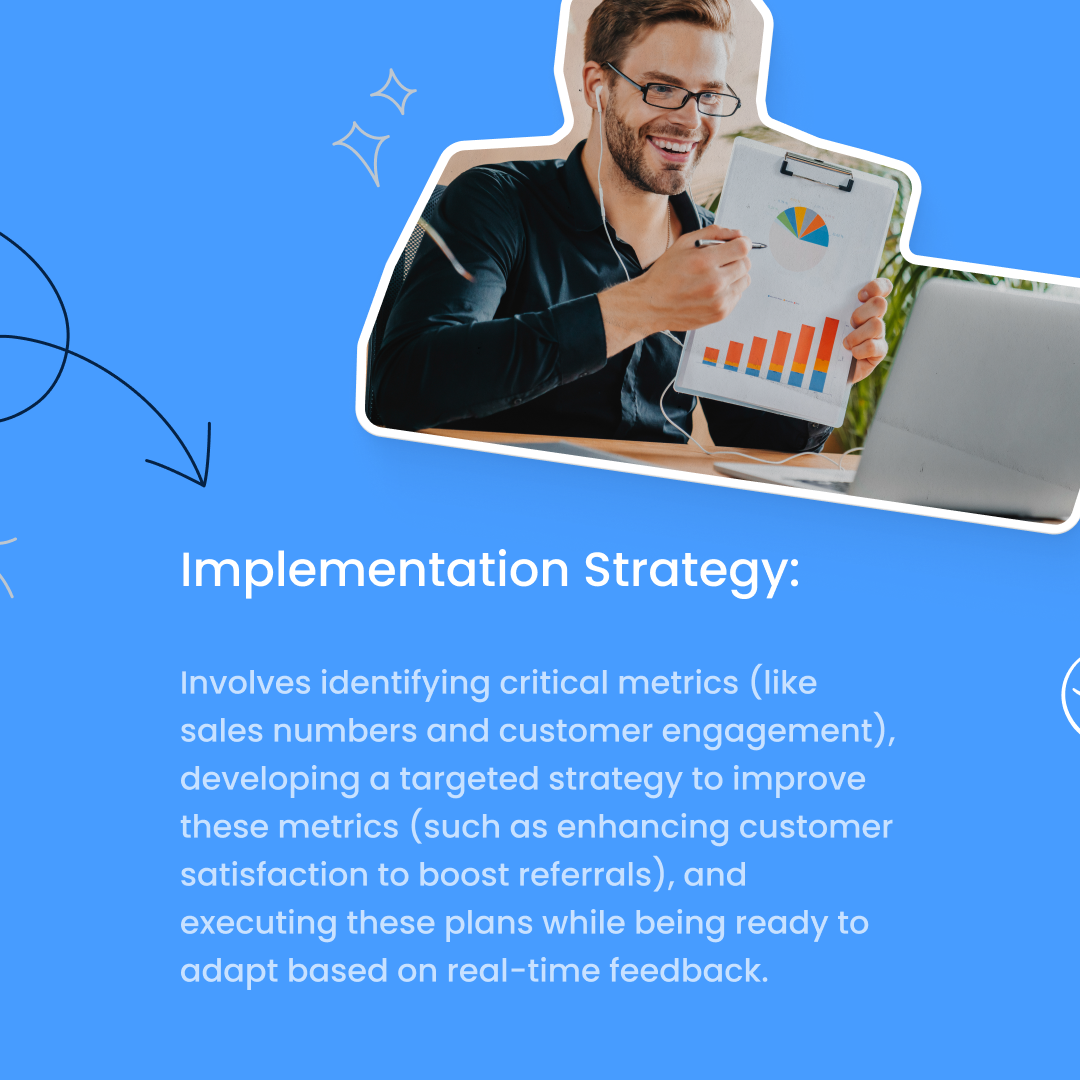How To Generate Better Qualified Leads Using The Marketing Backwards Framework
If you're looking to take your business to new heights, then focusing on generating more sales qualified leads is the fastest way to do it.
After all, if revenue growth is the main target, then you need your sales team to be talking to qualified leads as often as possible.
Yet most companies get this wrong...
Instead of focusing on both sales and marketing strategies that actually move the needle, they spend too much time creating marketing materials that don't directly lead to an increase in sales conversations - especially in the short-term.
Therefore, if you want to boost sales while ensuring your marketing team members are earning their keep every single day, then you need to adopt a strategic approach that bridges the traditional gap between sales and marketing teams.

Why "Marketing Backwards" Is Such An Awesome B2B Sales And Marketing Strategy
In this blog, we introduce you to the "Marketing Backwards" framework, a revolutionary tactic that aligns sales and marketing efforts from the finish line back to the starting point.
Though listen:
There are differences in how you'd approach this depending on if you're a b2c or b2b company.
Our agency primarily works in the b2b space, so what you're about to discover will be tailored towards b2b sales and marketing alignment.
And here's the thing:
Once you have as close to perfect sales and marketing alignment as you can possibly get, "Marketing Backwards" becomes a whole lot easier, as you're about to find out...
The "Road Trip" Analogy For Better Sales and Marketing Alignment
Picture this: you're gearing up for a road trip.
The idea of just jumping in the car and heading in any direction without a clear destination seems absurd, right?
Whether it's the golden beaches of California, the vibrant streets of New York, or the enchanting hockey rinks of Traverse City (though we might be a little partial to the latter), you have an end goal in mind.
Yet in the business world, so many businesses DON'T have a clear goal.
Now, you're probably reading this thinking that you do.
But, look:
We've worked with enough clients to know that, chances are, your end goal isn't as specific as it needs to be.
We see it all the time.
So, the big question:
What Makes a Good End-Goal?
Well, first of all, it needs to be specific.
Just as importantly, it needs to be something both your marketing and sales teams can get onboard with.
For example, a specific revenue growth goal could be to boost sales by 20% by the end of a particular quarter.
Or, if you want to grow faster and you feel your sales reps are up to it, it could be to double (or even triple) your customer base within the year.
Make sure your goal is clearly defined
Ensure any goal you set isn't something vague like "We want to see continuous improvement in our sales efforts..."
...Or "We want to generate more high quality leads..."
...Or "We want to ensure our marketing collateral leads to increased revenue."
While these are obviously things you want, they don't provide you with a concrete way of measuring success.
After all, is a 15% increase successful?
Or would it be deemed a failure?
Without knowing this in advance, it's hard to say.
The point is, whatever your end goal, it has to be something you can easily say "yes, we achieved it" or "no, we didn't" based on data.
What's The Best B2B Sales and Marketing Strategy For Hitting Your Goal?
Let's go back to our road trip analogy for a moment...
Upon deciding your destination, the next logical step is planning your route.
Will you opt for the scenic routes for their beauty or the interstate highways for their efficiency?
In our marketing analogy, this planning phase involves selecting the b2b sales and marketing strategy that will most effectively propel you towards your end goal.
This is where you begin to see the "Marketing Backwards" approach beginning to work its magic.
You see, even those companies who do have a highly specific end-goal in place often don't choose the correct strategy and tactics to actually achieve it.
Instead of working backwards from that goal and thinking "Hmm, what's the fastest and most efficient way we can hit this goal?"
...They instead focus too heavily on top-of-funnel marketing tactics like posting more on social media.
Big mistake.
We'll go into this in more depth shortly...
But for now, you should know that...
Focusing On Top Of Funnel Marketing Tactics is NOT The Best Way to Experience Increased Revenue Growth.
Instead, you want to focus on things that compress the buyer's journey as much as possible, aiming to get your sales team speaking to as many qualified prospects as they can.
To do this, it's vital your sales and marketing teams are on the same page.
Case in point:
Let's say that together they decide the end-goal should be to increase revenue by 35% in the next quarter compared to the same quarter last year...
If this were the case, then it would be silly for the marketing team to put all their focus into generating marketing qualified leads (such as posting a ton of content on social media) at the expense of sales qualified ones (such as running a targeted ads campaign).
Gathering Essential Tools for a Successful Campaign
Again, let's go back to our roadtrip...
Before hitting the road, you'd pack everything you need, right?
Similarly, in business, this step is about assembling the resources and tools required to achieve your goals and kick off a successful campaign.
Whether it's integrating a new CRM system (such as HubSpot) to improve customer interaction tracking, or allocating budget for targeted social media advertising, having the right tools at your disposal is as crucial as packing snow chains for a winter adventure.
Without these essential sales, marketing, and automation tools, aiming for a boost in revenue becomes significantly more challenging.
And, yes, it's almost certainly going to result in your overall business growth feeling as slow as driving in LA traffic!
Forecasting the Journey: Conducting Market Research
Just as you'd check the weather before embarking on a trip to avoid any storms, conducting market research is vital if you want to hit your business goals.
This phase involves diving deep into the current trends within your industry, understanding what your competitors are up to, and identifying any "road blocks" you could face within your business.
For instance, if you notice the successful competitors you want to emulate don't have a complex sales funnel in place, then getting your marketing department to create one would be a waste of time.
Instead, if your competitor has a simple sales funnel that results in a seamless customer journey, you should look to produce something similar yourself.
Yet the crazy thing is, we talk to so many sales and marketing teams that don't do enough market research.
It results in so many marketing teams across a wide range of industries simply guessing as to what tactics to use...
And that in turn leads to sales teams (and the individual sales representatives) getting frustrated because they're not being fed good enough leads.
Hitting the Road: Execution and Flexibility
With your destination in mind, route planned, and essentials packed, you're all set to hit the road.
Yay :)
However, just like any road trip, staying alert and adaptable to the changing conditions around you is crucial.
Encountering a closed road might result in a detour...
Or you might find a more efficient route along the way.
The point is, you have to be flexible...
Just like in business.
After all, being prepared to adjust your strategies based on real-time feedback and results is key.
For instance, let's say you set out to double the amount of revenue you generate from existing customers within twelve months...
In this scenario, you would begin by listing out all the things you'd need in order to achieve this goal.
This would include things like:
-
Making sure you provide a seamless customer experience
-
Ensuring your customer data is up-to-date in order to help your sales and marketing teams decide who to target
-
Having a proper cross-sell and upsell strategy in place, ensuring that what you're offering customers is highly targeted to each of your buyer personas
Yet what if, half way through the year, your sales and marketing teams butt heads...
...It turns out your marketing team is putting out so much content on social media to attract new potential customers, that they're neglecting marketing to existing customers.
This then leads to your sales team getting frustrated because the CEO is breathing down their neck, wondering why they're not squeezing more revenue out of the current client base, as planned.
In this scenario, both marketing and sales teams should sit down together and tweak their strategy, aiming for better sales and marketing alignment.
The marketing team might then decide to focus more on email marketing or direct mail campaigns to existing clients, letting them know about special offers should they wish to upgrade (upsell) or buy something else (cross-sell).
This would obviously then benefit the sales team because the customer would be better qualified by the time they got on the call, increasing the chances of closing the deal.
Reaching Your Destination: Evaluating Success
As you finally reach your destination, it's time for you to reflect.
Did you arrive within the anticipated timeframe?
Was the chosen route effective, or are there adjustments to consider for future journeys?
In the context of "Marketing Backwards," this stage involves analyzing the outcomes of your marketing efforts
It's not only about assessing whether you achieved your final goal but also understanding which strategies were most effective, what areas need improvement, and how these insights can inform future campaigns.
By initiating your planning with the end goal in mind and working back from it, "Marketing Backwards" ensures every step you take is deliberate, aiming to steer your business toward its ultimate goal.
It embodies strategic planning, efficient resource allocation, profound market understanding, agile execution, and ongoing learning.
Like any memorable road trip that demands thoughtful preparation and the flexibility to overcome unexpected challenges, so does the journey to achieving business success.
Understanding The sales and marketing divide

It's important to understand the root causes of the marketing and sales divide.
See, sales teams are on the front lines, directly engaging with prospects and clients with the aim of closing deals and meeting quotas.
They're focused on immediate results and solutions.
On the flip side, marketing teams are the architects of the brand's bigger picture, concentrating on lead generation, brand awareness, and nurturing potential customers over time.
They craft the narratives and pathways that ideally guide prospects to the sales team.
This difference in focus can often result in sales and marketing alignment being way off center, almost to the point where it feels like your sales and marketing teams are speaking different languages.
Without a unified vision, marketing efforts may generate leads that don't meet the sales team's criteria, causing sales and marketing alignment to be out of whack.
Conversely, sales might not fully leverage the insights and assets developed by marketing, overlooking potential strategies that could increase the chances of securing a deal.
Ultimately, if you want your marketing teams work to result in actual business success (i.e. more revenue and profit) then you need to do whatever it takes to make sure your marketing and sales teams align.
How To Increase Sales and Marketing Alignment As Quickly As Possible
"Marketing Backwards" serves as a strategy to unite sales and marketing alignment, steering both teams towards shared business objectives, such as revenue targets or customer acquisition goals.
It starts with both departments plotting the course together, ensuring that each step taken is in harmony towards reaching the agreed destination.
This collaboration might include setting joint objectives that account for both lead quality and quantity, ensuring that any and all marketing strategies directly support the sales pipeline in a meaningful manner.
With a shared “destination” in sight, the teams can go on their journey together, where they communicate regularly, have routine check-ins, and focus on hitting aligned metrics.
The awesome thing is, both departments can help each other out.
Sales can offer invaluable insights to marketing about customer feedback, objections, and competitive landscapes.
This should then help the marketing team produce consistent messaging that resonates with the company's ideal buyer personas and addresses their paint points.
In turn, marketing can arm sales with comprehensive research, content, and campaign strategies to more effectively nurture leads.
Not only should this help to increase your sales representatives close rates, it should also help to shorten the buying cycle.
an example of this sales and marketing alignment in action:
Let's say increasing sales in a new market segment is the goal agreed upon by marketing and sales.
First, both teams would work together to create buyer personas.
Once this is done, marketing could then tailor its campaigns to address the specific needs and pain points of this buyer persona.
Then, sales could provide feedback on the effectiveness of these efforts and share the interactions they've had with prospects with the marketing team.
As you see, it's one big circle.
One team complements the other.
And vice versa.
Ultimately, dismantling the barriers between marketing and sales results in a culture of cooperation, respect, and shared purpose, where both teams complement one another and sales and marketing alignment is sky-high.
The expectation would then be that they’ll learn from each other, refine their strategies, and ultimately reach their shared goals more efficiently and effectively than ever before.
This is the core essence of the "Marketing Backwards" framework.
Aligning Sales and Marketing The Easy Way
In order to make the most out of this "Marketing Backwards" concept, aligning sales and marketing is essential.
I hope we've made that abundantly clear by now!
The trouble is, sales and marketing teams often seem to operate in parallel universes.
Traditionally seen as separate entities, these teams have their unique languages, tools, and objectives.
However, for your campaigns to truly flourish, it's essential your sales and marketing teams collaborate and communicate properly and regularly with one another.
No excuses.
Just imagine a world where your sales and marketing teams are working from the same page...
...A world where your marketing department is feeding your sales department slam dunk opportunity time and time again.
That's what you NEED to have in place in order to drive revenue growth and make this whole "Marketing Backwards" idea work.
That means both marketing and sales teams need to be able to access customer data to get a better understanding of how prospects and customers interact with different messaging and offers.
Your sales and marketing departments should also take lead scoring seriously if they want to have as many conversations with qualified prospects as possible.
We haven't seen a scenario where both sales and marketing teams aren't delighted with the results proper lead scoring provides.
And that makes sense...
Because without it, your sales team is going to be chatting to all kinds of leads with no guarantee that they're even close to being ready to buy.
And while lead scoring obviously doesn't guarantee everyone will purchase, it's a great way of minimizing pointless conversations that go nowhere.
On top of that, you also want to make sure your marketing department has its lead nurturing processes dialed in.
See, without a top-class lead nurturing process, it's almost impossible to achieve marketing and sales alignment because your prospect's sales readiness won't be at the level it needs to be at.
Look:
There are obviously lots of different way to increase marketing and sales alignment.
But what we've covered here is a good place to start.
Implementing Your “Marketing Backwards” Strategy

So, how do you bring this strategy to life?
We go into more depth in this post here.
But you should begin with a thorough analysis of the metrics that matter most – such as sales figures, customer engagement, and other key performance indicators.
Then, devise a strategy that links these metrics back to your marketing initiatives.
For example, if customer referrals are your golden ticket, focus your marketing on enhancing customer satisfaction and encouraging those referrals.
Imagine a local bakery that discovers its best sales come from custom birthday cakes.
By centering their marketing on these cakes, engaging customers on social media, and hosting tasting events, they witness a significant increase in orders.
This is "Marketing Backwards" at work – starting with the end goal in mind and tracing the steps backward to achieve it.
By concentrating on the drivers of your business and ensuring team alignment, you set the stage for sustained success.
Summing Up The Importance of Achieving Sales and Marketing Alignment
If you want to run with this "Marketing Backwards" concept (which I suggest you do because it's one of the most successful strategies we've ever seen when it comes to generating more revenue), then aligning sales and marketing is crucial.
Sales and marketing alignment shouldn't just be a "nice to have" thing...
It should be a necessity.
After all, achieving sales and marketing alignment transcends mere collaboration.
It's about orchestrating a symphony where every note contributes to the grand performance of generating high quality leads.
This method requires a mindset shift that requires digital marketing efforts to be intricately linked with the objectives of sales representatives.
By developing buyer personas together, both marketing and sales teams can ensure their efforts are not only aligned but are also directly contributing to the nurturing and conversion of leads that meet the high standards required for significant business growth.
In this light, aligning sales and marketing is essential for any business aiming to thrive in today's competitive landscape.




